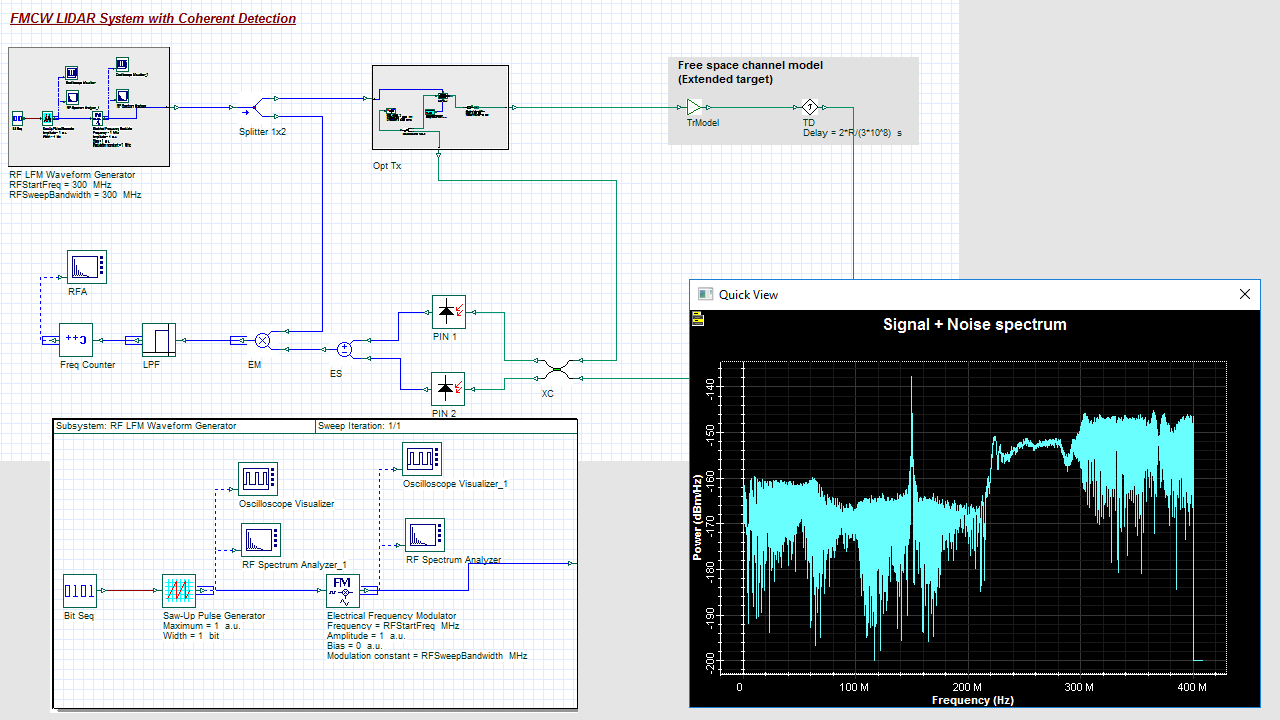OptiSystem is an excellent tool for designing prototype designs of communications and sensor systems. The following application note demonstrates how OptiSystem can be used to design and simulate realistic models for light detection and ranging systems (LIDAR). Four range measurement techniques are modelled: Laser pulse time of flight, Phase-shift measurement, Frequency Modulation Continuous Wave (FMCW) with direct detection, and FMCW with coherent detection.
Compatibility:
- Application Category: OptiSystem Applications
- Tags: Applications, Home Page Applications, OptiSystem
Related:
- Published:


